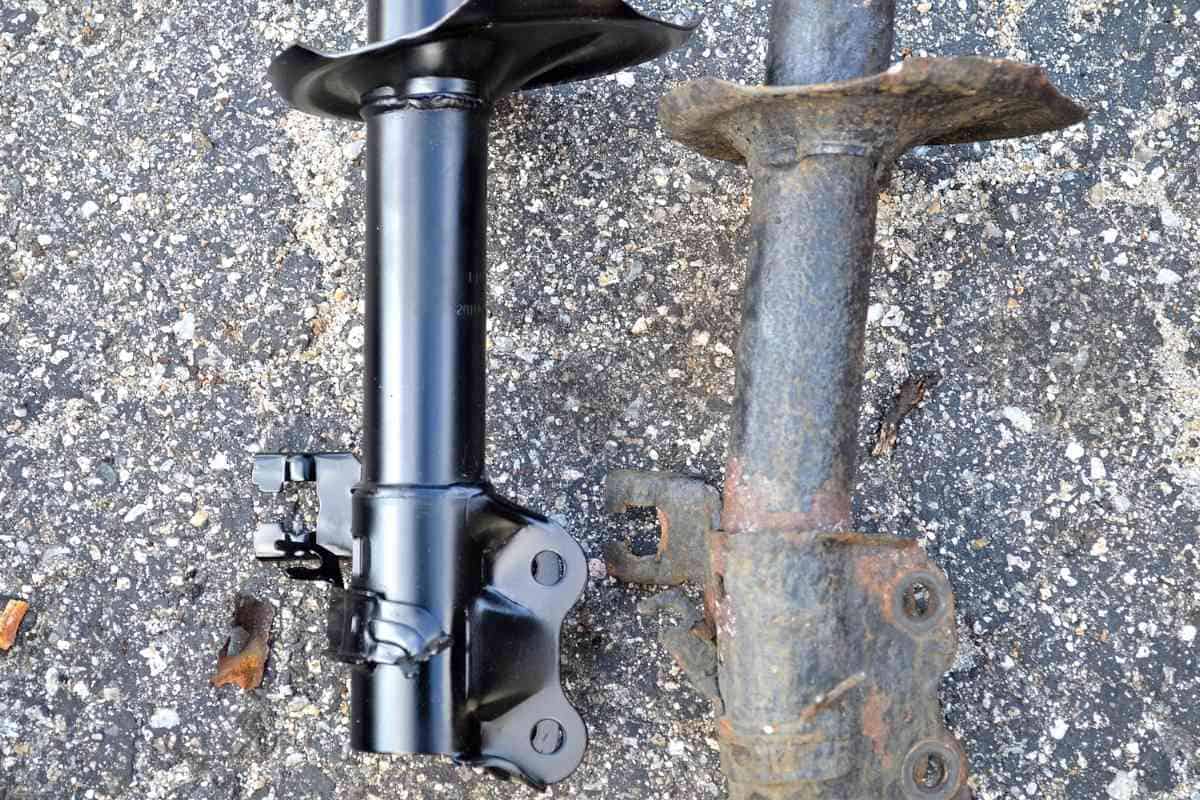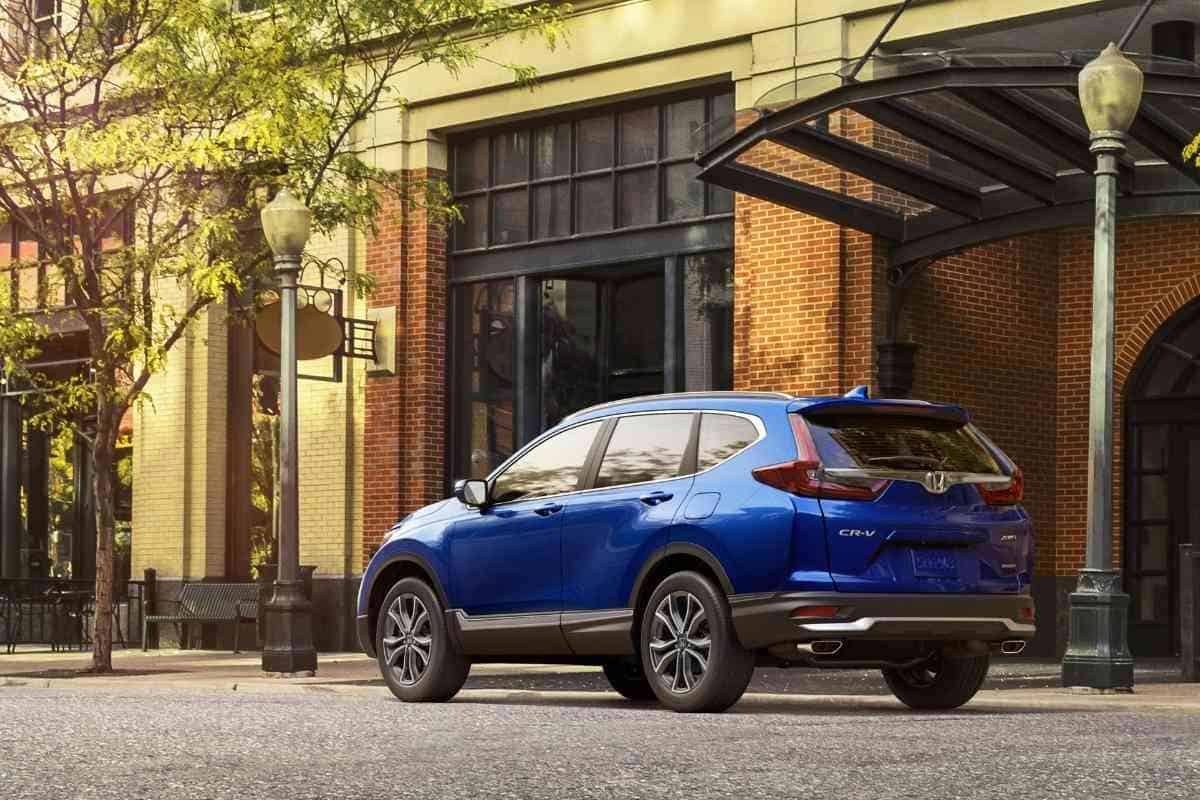How Long Do Honda CRV Struts Last? 4 Signs They’re Worn Out!
If you are noticing your Honda CRV SUV leaning while driving or every bump you ride over feels violent, you may be finding out how long your struts last.
These are telltale signs that your struts and shocks are getting worn down and may even be shot completely. The technician tells them that most drivers find out the hard way when the car breaks down or during an oil change.

How Long Do Honda CRV Struts Last?
On average, most Honda CRV struts last around seven years for 75,000 miles, but the range can vary quite a bit. With proper care and a little good fortune, you may be able to reach 100,000 miles across ten years before a replacement is needed.
The Honda CRV has a strut suspension system, one of the most important components of the vehicle’s overall performance. It provides a smooth ride and reduces noise, vibrations, and harshness by absorbing bumps in the road.
The struts also help to improve handling, and this guide explains how long you can expect them to last on average, along with ways to spot worn-out struts.
Honda CRV struts are known to be very durable and can last for a long time. But we have analyzed results over time to determine exactly how much longevity they can provide you. Keep reading below to become an expert on the topic yourself.
Honda CRV struts are a type of suspension strut on vehicles that helps to control the movement of the vehicle. They have an average lifespan of 75,000 miles, but it could vary depending on some key factors.
These struts are also easy to replace, so you shouldn’t worry too much when they start to wear down. Based on the average mileage, you can expect the struts to last for 5-10 years, depending on total use.
We consistently hear that the Honda CRV is known to have recurring issues compared to other Honda model vehicles. It tends to be below average for things like gas tanks, battery life, engine, and more.
For example, the RAV4 gets higher praise from customers when reporting on reliability and internal vehicle problems.
But when you compare the performance of the struts to the industry average, you will notice it ranks above average.
Many vehicles only provide about 50,000 miles of lifespan for struts, so you can see the suspension system is above average in this vehicle.
What Are Struts?
Struts are a part of an independent suspension system that is used on vehicles. They are designed to absorb the energy from the road and transfer it to the vehicle’s wheels, which allows for better traction and stability.
Struts are made up of metal rods that are connected to each other by U-shaped springs. The tension in these springs is what keeps the car level when it is in motion.
The assembly includes a coil spring and a shock absorber. Both of these parts work together to support the vehicle and provide absorption capabilities when the vehicle rides over a bump or pothole.

When Should Honda CRV Struts Be Replaced?
Honda CRV struts are a vital part of the car’s suspension system. They are necessary for a smooth ride and control the car’s movement, but they won’t last forever.
When they need to be replaced, it is important to do it as soon as possible. You will notice key signs of wear that are an indication it is time for your struts to be replaced.
Whenever you take your Honda CRV in for an oil change or repair, it is good to have them checked. The repair shop will be able to spot any potential problems right away to offer a recommendation.
What Are Signs Of Worn Out Honda CRV Struts?
Struts are a critical part of your Honda CRV, so it is important to make sure they are in good condition. There are signs that indicate that the struts might be worn out and need to be replaced.
Leaning To One Side
You should never feel any unevenness or lack of vehicle balance when taking turns. However, if the struts are worn out, this is a common occurrence.
You will feel your CRV lean heavily to the outside of the turn. It is an extremely uncomfortable feeling for your car, and after a while, it could also lead to other engine or tire issues.
Bouncing Tires
The primary reason you need struts is for the times you reach a bumpy road but want to maintain comfort and stability. When the strut is worn, your tires will excessively bounce when riding over the bumps.
If you don’t feel the tires immediately settle after going over a harsh bump, this could mean your struts are in bad condition. You will also notice the tires wear faster and unevenly when driving on bad struts.
Lack Of Stability At High Speeds
When driving at high speeds, car stability is crucial. The smoother the ride, the easier it is to drive. However, if your car has bad struts and you decide to ride on the highway, you will feel less control over your vehicle.
Unusual Vehicle Noises
When driving on bad struts, noises are extremely common, coming in different forms. For example, a loud clicking noise when you turn the wheel signifies that the upper strut mount is worn and needs replacing.
Be on the lookout for any noises in your vehicle when turning, hitting bumps, or reaching high speeds. They tend to tell you something is wrong with your CRv’s struts right away.
How Much Does It Cost To Replace Struts On A Honda CRV?
The Honda CRV is an all-wheel-drive vehicle that can provide excellent performance in the winter to handle ice, snow, and steep hills. This terrain puts more pressure on the struts too.
Eventually, you will be in need of new ones, and a replacement becomes necessary to keep driving. On average, most strut replacements will cost about $800, but the price can change based on damage severity and where you live.
What Happens If You Don’t Replace Struts?
If you don’t replace your old struts, they will deteriorate more and become dangerous on the road. You will notice a significant decline in your CRV’s performance too.
This means every bump you hit will feel much harsher, and reaching highway speeds will feel more unstable than ever.
You will see tires wear down faster, less vehicle control, poor braking, and increased wear under the hood of your car. Always try to replace struts as quickly as possible after they have been deemed worn out.
